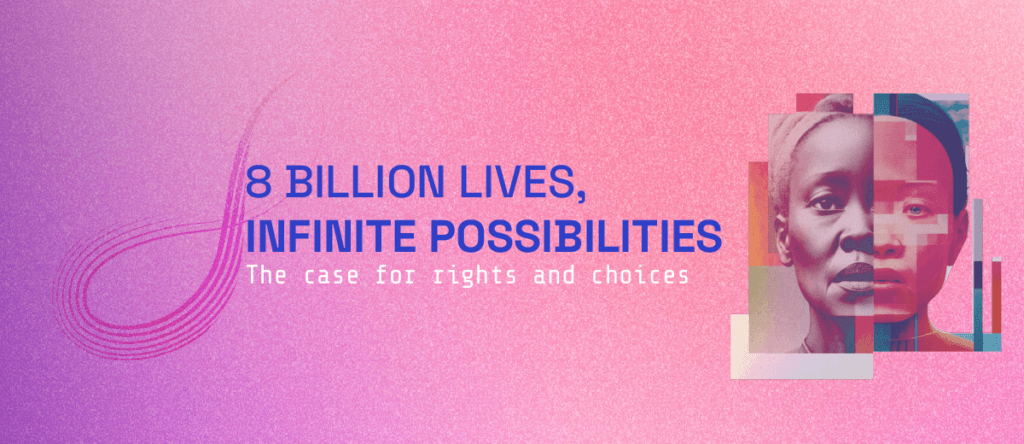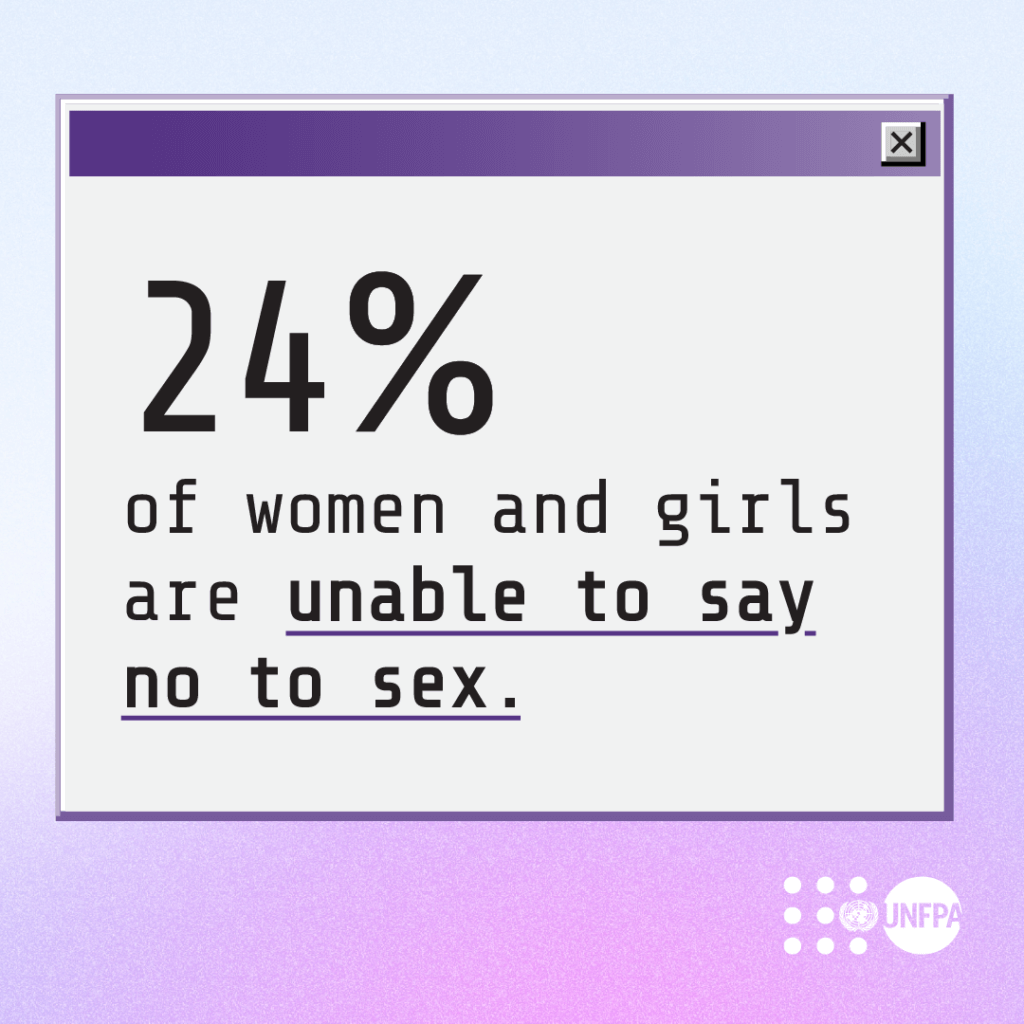8 Billion Strong: UNFPA Launches the 2023 State of the World Population Report

Press release
New York, 19 April 2023. New data reveals population anxieties are widespread and more governments are adopting policies aimed at raising, lowering, or maintaining fertility rates. But efforts to influence fertility rates are very often ineffective and can erode women’s rights, according to UNFPA’s 2023 State of World Population report, released today.
The landmark report “8 Billion Lives, Infinite Possibilities: the case for rights and choices” calls for a radical rethink of how population numbers are framed. The report urges politicians and media to abandon overblown narratives about population booms and busts. Instead of asking how fast people are reproducing, leaders should ask whether individuals, especially women, are able to freely make their own reproductive choices . The answer to this question, too often, is no.
“Women’s bodies should not be held captive to population targets,” says UNFPA Executive Director Dr. Natalia Kanem. “To build thriving and inclusive societies, regardless of population size, we must radically rethink how we talk about and plan for population change.”
A staggering 44 percent of partnered women and girls in 68 reporting countries do not have the right to make informed decisions about their bodies when it comes to having sex, using contraception and seeking health care. And, an estimated 257 million women worldwide have an unmet need for safe, reliable contraception.
Centering women’s health, rights, and choices
History has shown that fertility policies designed to increase or lower birth rates are very often ineffective and can undermine women’s rights. Many countries have rolled out programs to engineer larger families by offering financial incentives and rewards to women and their partners, yet they continue to see birth rates below two children per woman. And efforts to slow population growth through forced sterilization and coercive contraception have grossly violated human rights.
Family planning must not be used as a tool for achieving fertility targets; it is a tool for empowering individuals. Women should be able to choose if, when, and how many children they would like to have, free from the coercion of pundits and officials.
The report strongly recommends governments institute policies with gender equality and rights at their heart, such as parental leave programs, child tax credits, policies that promote gender equality in the workplace, and universal access to sexual and reproductive health and rights. These offer a proven formula that will reap economic dividends and lead to resilient societies able to thrive no matter how populations change.

Key Facts and Figures:
– Twenty-four percent of partnered women and girls are unable to say no to sex and 11 percent are unable to make decisions specifically about contraception, according to data from 68 reporting countries.
– A survey of eight countries showed people who had been exposed to media or conversations about the world’s population were more likely to view the global population as being too high.
– Global demographics are changing rapidly: Two-thirds of people are living in low fertility contexts, while eight countries will account for half the projected growth in global population by 2050 (the Democratic Republic of the Congo, Egypt, Ethiopia, India, Nigeria, Pakistan, the Philippines and the United Republic of Tanzania), dramatically reordering the world’s ranking of most populous countries.
– Blaming fertility for climate change will not hold the greatest carbon emitters to account. Out of 8 billion people, around 5.5 billion do not make enough money, about $10 a day, to contribute significantly to carbon emissions.
– A recent UN study says greater gender parity in the labor force would do more to sustain economies in aging, low-fertility societies than setting targets for women to have more children.
About the Report
The 2023 State of World Population report is this year’s version of UNFPA’s annual flagship publication. Published yearly since 1978, it shines a light on emerging issues in the field of sexual and reproductive health and rights, bringing them into the mainstream and exploring the challenges and opportunities they present for international development. This year’s report includes contributions from two UN partners: the International Organization for Migration and the Population Division of the Department of Economic and Social Affairs.
As the United Nations sexual and reproductive health agency, UNFPA provides access to contraception and lifesaving reproductive health services and information and empowers women and girls to make informed decisions about their bodies and lives.